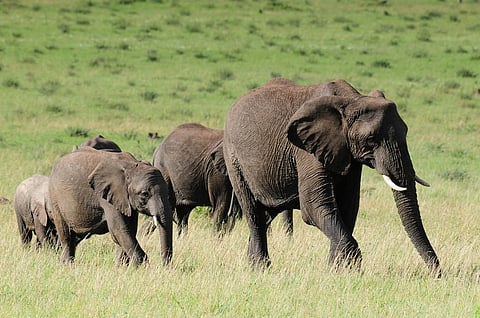

Stronger wildlife conservation efforts make sound economic sense. That’s precisely the message that a collaborative research on African elephants has tried to convey. In a first continent-wide assessment of the economic losses that elephant poaching is causing on nature-based tourism economies in Africa, the study revealed, “For every dollar invested in protecting elephants in East Africa, you get about US$1.78 back. That's a great deal."
The research, undertaken by scientists from the World Wildlife Fund (WWF), the University of Vermont and the University of Cambridge, argues that investing in elephant conservation is a smart economic policy for African countries.
Problem of poaching
According to Convention on International Trade in Endangered Species (CITES), poachers kill between 20,000-30,000 African elephants each year for illegal ivory trade, triggered by demand in China and other countries in Asia. The UN data, released in March 2016, showed that about 60 per cent of elephant deaths are being perpetrated by poachers.
Poaching puts both savannah and forest elephants at risk. While the financial motivation for ivory poaching is clear, the economic benefits of conserving elephants are not well understood. "While there have always been moral and ethical reasons for conserving elephants, not everyone shares this viewpoint," says Robin Naidoo, lead author of the study.
Cost of anti-poaching measures
According to the study, the annual anti-poaching costs to stop elephant decline across Africa’s 58 protected areas (PAs) with large elephant population will be $26.5 million. Almost two-thirds of this cost ($16.9 million) is needed for large forested PAs of central Africa where poaching has been most rampant.
Lost economic benefits
In order to arrive at an approximate figure, the team looked into the average number of annual visits to 164 PAs within 25 elephant range-state countries (containing 90 per cent of Africa’s elephants). Additionally, data on recent (2009–2013) population estimates and rates of illegal killing at 216 PAs was analysed along with the information on direct and indirect spending levels of tourists visiting PAs in Africa.
Conclusion
Elephant conservation in the savannahs of Africa is a wise option that ensures immediate and ongoing payback. The return on investment is positive as tourists’ willingness to pay to see elephants is sufficient to offset the increased costs incurred to safeguard elephant populations.
However, elephant-based tourism cannot contribute substantially to the conservation of forest elephants in central Africa. Since tourism level in these remote and difficult-to-access areas is lower than in savannahs, different funding mechanisms are needed to carry on with conservation measures.